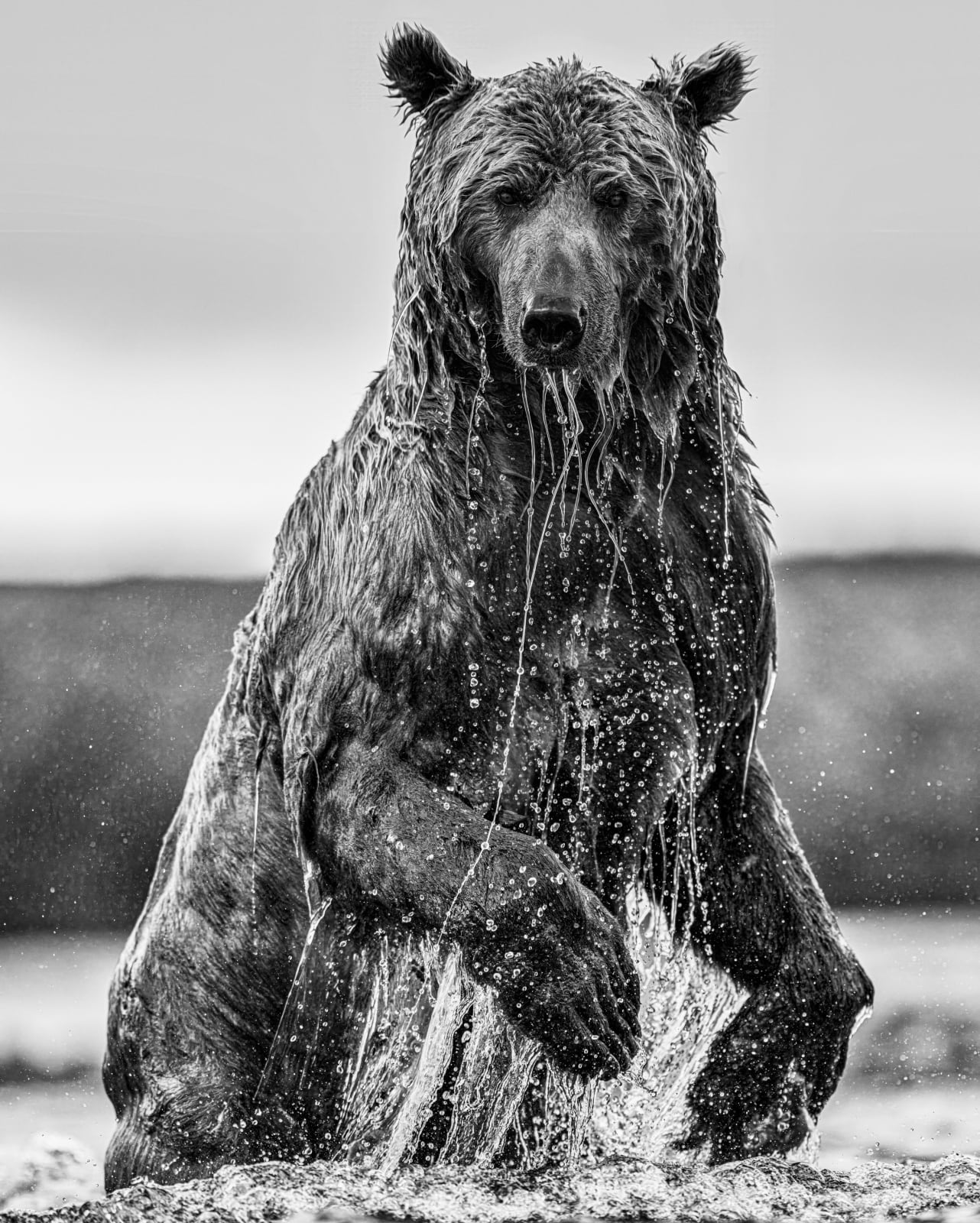David Yarrow
Backcountry
Archival Pigment Print
Large (framed): 85x71
Standard (framed): 61x52
Ed of 12
Standard (framed): 61x52
Ed of 12
In my experience, Alaskan bear photography leans heavily on two variables: logistical rigour and luck. If there is a third component, it is probably patience and an ability to kill...
In my experience, Alaskan bear photography leans heavily on two variables: logistical rigour and luck. If there is a third component, it is probably patience and an ability to kill time. I don’t really think camerawork, above a basic level, has much to do with it; it is more about making sure the camera is in front of interesting stuff when it matters and that is a function of logistical prowess and luck.
I sense that over the years our experience has helped push luck in our direction. As my friend Gary Player the golfer once commented “the more I practice the luckier I seem to get”. The guidance we have from 15 years of metadata of bear encounters on this river is never far from my mind. It is an iterative process and we have most certainly learnt on the job. In the early days, I really had no idea what I was doing and my work with bears was bland and generic.
This part of Alaska is proper backcountry and a world removed from the staged shoots I do around the world. There are few comforts other than familiarity, but that is the biggest luxury of all. I think I have spent more time over the years on this small patch of river gravel than I have in any smart hotel room in the world.
I don’t like to photograph bears when the light is bright. Somehow they become less menacing, and the sense of awe can be lost. It rains a great deal in Alaska, but there are also many sunny days during the salmon runs and on those days bear photography can become challenging not long after breakfast. It is a long way to come to work in suboptimal light, so we tend to push things logistically.
The day I took this photograph we were in the air in our float plane just after 5.30am and no one was anywhere near us when we trekked the tundra 30 minutes later. That is the way to do it - be alone and in place early in the backcountry and then wait for decent daylight and the magic to unfold.
I was back home and in a welcome hot shower by 10 am. I think I am too old now to believe that there is any better way to start the day.
I sense that over the years our experience has helped push luck in our direction. As my friend Gary Player the golfer once commented “the more I practice the luckier I seem to get”. The guidance we have from 15 years of metadata of bear encounters on this river is never far from my mind. It is an iterative process and we have most certainly learnt on the job. In the early days, I really had no idea what I was doing and my work with bears was bland and generic.
This part of Alaska is proper backcountry and a world removed from the staged shoots I do around the world. There are few comforts other than familiarity, but that is the biggest luxury of all. I think I have spent more time over the years on this small patch of river gravel than I have in any smart hotel room in the world.
I don’t like to photograph bears when the light is bright. Somehow they become less menacing, and the sense of awe can be lost. It rains a great deal in Alaska, but there are also many sunny days during the salmon runs and on those days bear photography can become challenging not long after breakfast. It is a long way to come to work in suboptimal light, so we tend to push things logistically.
The day I took this photograph we were in the air in our float plane just after 5.30am and no one was anywhere near us when we trekked the tundra 30 minutes later. That is the way to do it - be alone and in place early in the backcountry and then wait for decent daylight and the magic to unfold.
I was back home and in a welcome hot shower by 10 am. I think I am too old now to believe that there is any better way to start the day.



